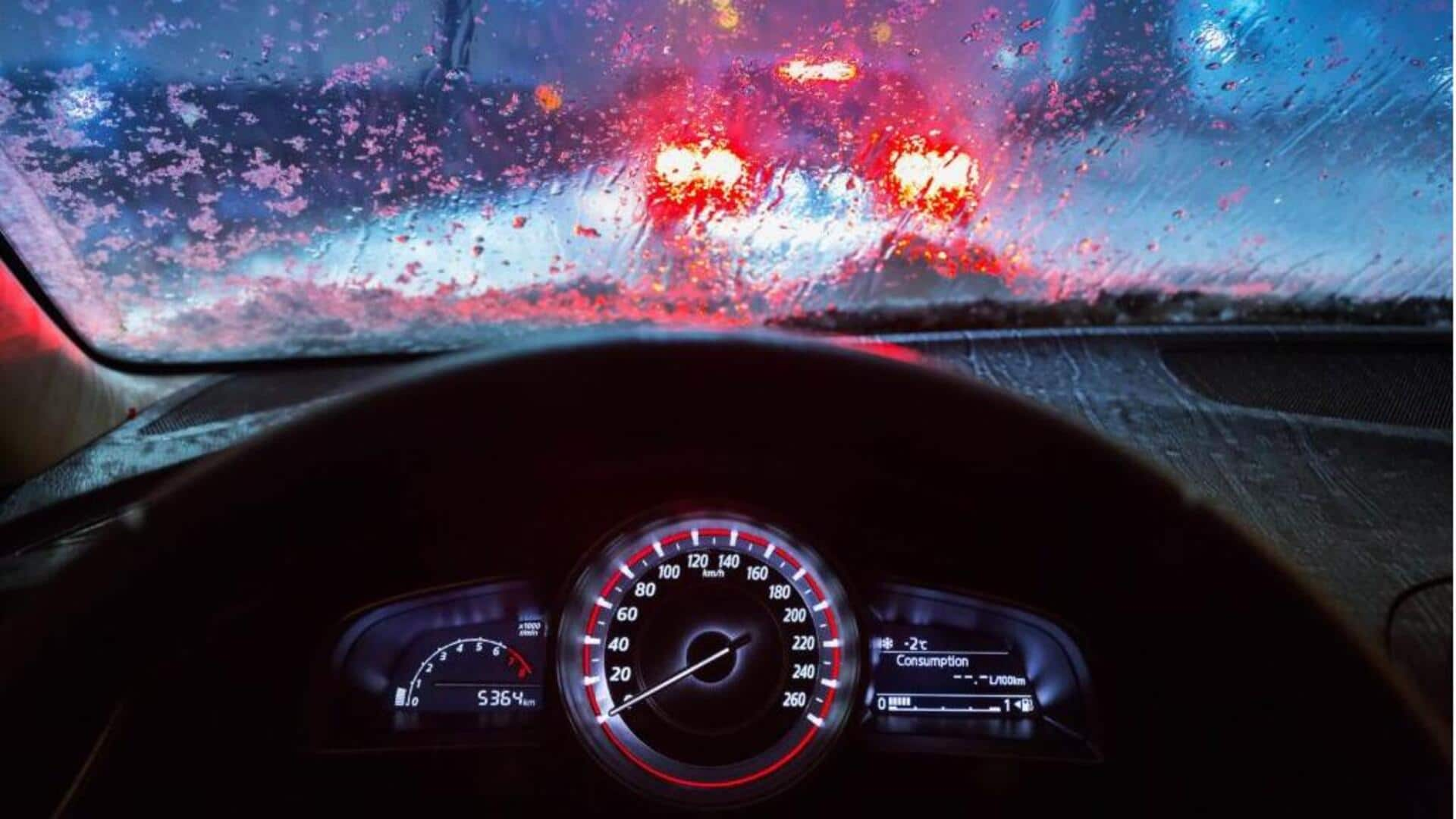
5 points to keep in mind while driving in rain
What's the story
The monsoon season is here in India and it is time to prepare for wet weather driving. Rainy days can bring challenges like reduced visibility, slippage, and plying through flooded roads. However, with a few simple precautions and tips, you can navigate through these conditions safely and confidently. Here are some key points to keep in mind while driving during rains. Let's take a look.
Tip 1
Check tire tread depth
Tires are the most important part of a vehicle, especially during monsoons. The depth of the tread should be at least 2mm deep. Most tires come with built-in tread wear indicators, small cross ribs in the main longitudinal grooves that indicate when it's time for a replacement. Worn-out tires can lead to skidding on wet roads, so make sure to replace them on time.
Tip 2
Ensure brakes are in good condition
Properly functioning brakes are vital in all driving conditions, but especially during monsoons when stopping distances increase due to wet roads. Make sure your brakes are in good condition before hitting the road. If you drive through heavy rain or large puddles, dry your brakes by lightly tapping them intermittently. This will ensure optimal performance and prevent accidents caused by brake failure.
Tip 3
Use headlights, not hazard lights, in low visibility
In low visibility conditions, it's best to use your headlamps and fog lights (if available) to make yourself more visible to other drivers. However, avoid using hazard lights as they can confuse other drivers into thinking a slow-moving car is stationary. This could lead to accidents, especially in heavy rain when visibility is already compromised.
Tip 4
Maintain safe distance from vehicles
Braking distances increase on wet surfaces, so it's important to maintain a safe distance from the vehicle in front of you. This will give you enough time and space to react in case of sudden stops or emergencies. Also, don't forget to dry your brakes by gently pressing the pedal while moving after passing through waterlogged areas. This will ensure optimal braking performance throughout your journey.
Tip 5
Know how to escape a submerged car
In case of an emergency, learn how to escape your car safely. Many vehicles have an inner boot release mechanism accessible via the folding rear seats in case the doors get jammed. You can also break open a window with a car hammer, and metal sliders of the headrest or feet if needed. Keeping handy tools like a seatbelt cutter, torch, and certified fire extinguisher is also advisable for added safety during monsoons.